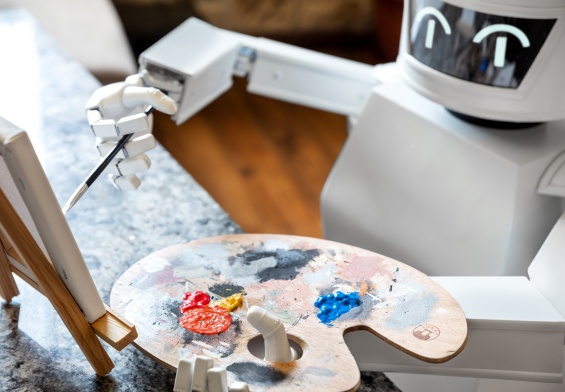Choosing the right paint color for your bathroom has a huge impact on the room’s aesthetics and mood. Whether you want a relaxing vibe or to make a bold statement, the color palette you pick plays a large role. In this guide, we’ll discuss how to choose the best bathroom paint colors, taking factors like color theory, room size, lighting, and the overall décor in the rest of your home into account.
Understand the Basics of Color Theory
Use the Color Wheel
Knowing the color wheel and how it works provides you with an understanding of which colors complement each other. Colors opposite each other on the wheel, like purple and yellow, are complementary and contrast well when put together. Analogous colors, like green and blue, sit next to each other and harmonize well. According to Better Homes & Gardens (BHG), referencing the color wheel can be a big help in the color selection process.
Three-Color Rule
When creating your bathroom color schemes, use the rule of three: one neutral, one rich color, and one accent. Keep them balanced in a 70/20/10 ratio. For example, white (70%), light green (20%), and Kelly green (10%) combine to give a bathroom refreshing and lively vibes. BHG suggests this approach to keep the bathroom’s colors balanced and visually appealing.
Choose Colors Based on Bathroom Size and Lighting
Small Bathrooms
Light colors can make a small bathroom feel larger. White, pale gray, or pastel shades tend to open up the space. Farrow & Ball’s “All White” is a crisp choice that reflects light beautifully without feeling too bare. Katie Hodges, an interior designer, mentions, “Because it lacks the colder, blue undertones of many whites, it beautifully reflects light without feeling stark.”
Large Bathrooms
Larger bathrooms can handle darker or bolder colors better than smaller ones. Think about using darker shades on an accent wall or vanity to add depth and interest without overwhelming the space. Colors like Farrow & Ball’s “Off-Black” add a sophisticated but simple touch, which is all the rage in modern interior design. Designer Stefani Stein loves this bold shade for that dramatic touch in a classic bathroom.
Lighting Considerations
Natural and artificial lighting have a huge impact on how paint colors appear. When picking your bathroom colors, test your choices in different lighting conditions. For instance, Benjamin Moore’s “Wickham Gray” works well with natural stone, so it looks airy with concrete or chic with glossy black tiles. Christina Kim of Christina Kim Interior Design shares, “Its blue-green undertones look amazing with natural stone.”
Select Colors for the Mood You Want to Create
Serene and Relaxing
Neutral palettes like white and gray create a calming environment. Sherwin-Williams’ “Pure White” creates a clean and serene backdrop that’s ideal for a bathroom. Gayer lists this shade as one of her favorites for creating a serene retreat in a bathroom.
Bold and Vibrant
You can incorporate bold bathroom colors in smaller doses, such as on an accent wall or cabinetry for a more dynamic look in the bathroom. Benjamin Moore’s “Dark Olive” on a vanity can make a striking statement without becoming too dominant in the room. Gayer highlights this shade as one of her favorites for creating a dramatic effect.
Consider the Overall Home Decor
Harmonize with Adjacent Rooms
Make sure your bathroom color schemes complement the color schemes in adjacent rooms to keep your home’s look cohesive throughout. Keeping the style and color palette consistent enhances the overall aesthetic appeal and aligns with modern interior design trends.
Trendy vs. Timeless
You should also think about whether you want to follow current trends or if you prefer a timeless look. Classic bathroom color schemes like Benjamin Moore’s “Balboa Mist,” a soft white with gray undertones, are classic, elegant and adaptable to almost any other colors you want to use. Gayer used this shade on the majority of a vast primary bathroom, lending it a classic and cool look.
Test Before You Commit
Sample Paints
Always test your favorite bathroom paint color ideas before committing to them. Paint small sections of your bathroom walls and observe them at different times of the day to see how the colors look under different lighting conditions.
Assess Undertones
You also need to pay attention to the undertones in your bathroom paint color ideas. Whites, for example, can have warm or cool undertones, which impact how they pair with other colors and elements in your bathroom. For example, Farrow & Ball’s “All White” is celebrated for its ability to reflect light beautifully and pick up the undertones around it.
Choosing the Best Bathroom Paint Colors
Choosing the best bathroom paint colors involves taking color theory, lighting, the desired mood, and the overall décor of the rest of your home into account. By following these tips and testing your choices, you can create a bathroom that is both beautiful, functional, and reflects your personal style.



